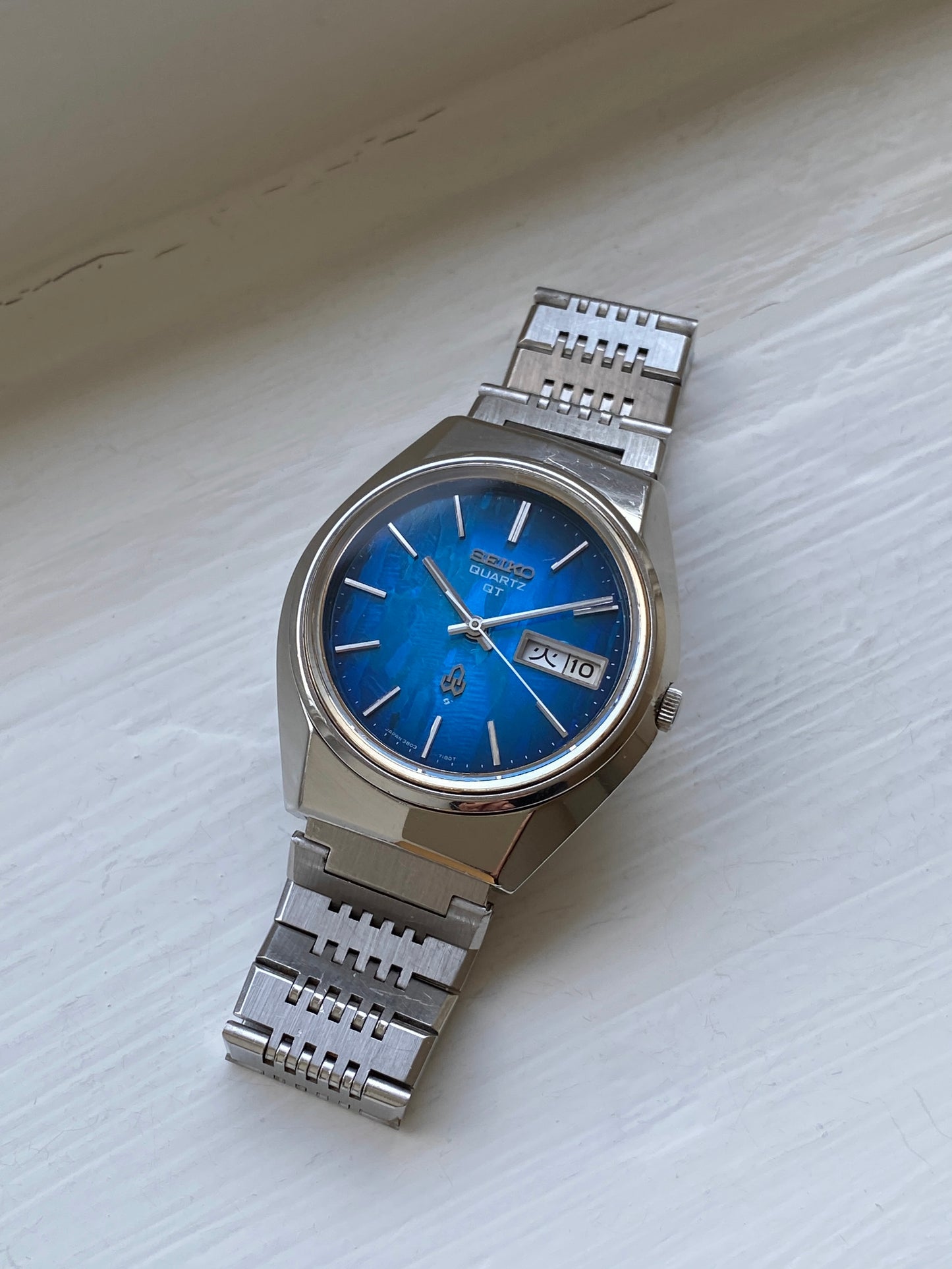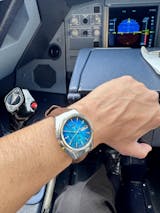Seiko Quartz QT 3803-7100
Seiko Quartz QT 3803-7100
Couldn't load pickup availability
|
Brand |
Seiko |
|
Model |
Quartz QT |
|
Reference |
3803-7100 |
|
Year |
1973 - September |
|
Movement |
Quartz |
|
Extras |
New battery | New battery cover gasket |
|
Dial |
Blue camo |
|
Jewels |
7 |
|
Case |
37mm |
|
Lugs |
18mm |
|
Day/date |
Day and date |
|
Crystal |
Mineral |
|
Bracelet |
Bambi Oscar | Fits up to a 19,5 cm wrist |
|
Performance |
±15 seconds per month |
|
Box/papers |
Not included |
|
Condition |
Excellent |
The watch
Seiko Quartz QT from 1973 in excellent condition. The blue holographic dial has a camo-texture and changes color depending on different lighting. A Bambi bracelet in very good condition from the same era has been fitted. Bambi is one of the largest Japanese manufacturers of aftermarket straps/bracelets.
The case has very minor signs of use and the crystal has a few tiny hairline-scratches. The battery has been replaced, as well as the battery cover gasket.
Details
The Cal. 38 was Seiko’s first mass-produced quartz movement and was produced from the early to late 70’s. It was a high-quality movement with 7 jewels.
The quartz crisis
The "quartz crisis," also known as the "quartz revolution," refers to a period in the late 20th century when the Swiss watch industry faced significant upheaval due to the rise of quartz technology. This technological shift began in the 1960s and 1970s, primarily driven by Japanese companies like Seiko.
Quartz watches, which use a battery-powered quartz crystal to keep time, offered several advantages over traditional mechanical watches. They were more accurate, less expensive to produce, and required less maintenance. Seiko, a pioneer in quartz technology, introduced the world's first quartz watch, the Astron, in 1969. This innovation demonstrated that quartz watches could offer precision and affordability, challenging the long-standing dominance of Swiss mechanical watches.
The Swiss watch industry, which had long been revered for its craftsmanship and mechanical expertise, struggled to adapt to this new technology. Many Swiss companies initially underestimated the impact of quartz watches and were slow to innovate. As a result, they faced financial difficulties and market share losses. The quartz crisis led to the decline or bankruptcy of several traditional Swiss watchmakers and forced the industry to undergo significant restructuring.
Ultimately, the quartz crisis reshaped the watch industry, leading to a renewed focus on innovation and a blend of traditional and modern technologies. The Swiss watch industry eventually rebounded by incorporating quartz technology alongside their mechanical expertise.



























